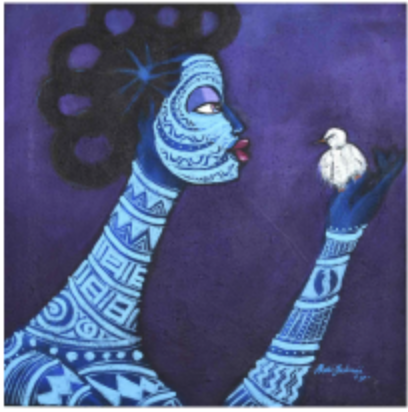
Let’s be honest—museums can sometimes feel stiff and silent. But African art is anything but that. It's bold, alive, and full of movement. So why keep it locked behind glass?
Across Africa, museums are finally catching up to this energy. They're ditching “look but don’t touch” in favour of interactive exhibits. What this means is that you don’t just see the art—you feel it, hear it, and move with it. It’s almost like you're "in it” or even “it”. Whether it's through touch screens, audio guides, VR, or hands-on workshops, these new experiences are breaking barriers.
Take the upcoming Museum of West African Art (MOWAA) in Benin City. It’s not just a museum—it’s an immersive hub, complete with digital displays, performance spaces, and even a rainforest gallery. It’s all about celebrating West African creativity while keeping it real and relatable.
Down south in Cape Town, Zeitz MOCAA is taking a mobile approach. Their programmes bring African art to schools and communities—no ticket needed. It’s art on the move, literally.
The message is loud and clear: art should be inclusive and for everyone, available everywhere, and in this digest, we will explore the essence of interactive exhibits.
Top Picks from Our Collection



1. Touch, Click, Explore
Interactive exhibits turn visitors into participants. No more quiet nods in front of a painting—now you can zoom in, spin it around, or dive into its story through audio and video.
The Virtual Museum of Modern Nigerian Art brings this to life online. You can tour exhibits, learn about artists, and enjoy the experience from your couch.
In Uganda, the national museum lets visitors walk through recreated traditional homes, handle tools, and hear local music. It’s not just an exhibit—it’s a journey into daily life from centuries past. (Uganda Museum)
These experiences aren’t about flashy tech. They’re about connection.
2. Learn by Doing
When people can touch, play, and ask questions, they learn more. That’s the power of interactive art.
In Cameroon, the Mus’art Gallery lets you see, feel, and understand the craftsmanship behind local art—from beadwork to bamboo design. It’s hands-on, and that makes it stick.
Workshops, live demos, and artist talks are popping up across museums. They are bringing communities closer to the art—and closer to each other.
What’s the Catch?
Of course, interactive exhibits are not cheap. They need funding, tech support, and staff who know how to run it all. Accessibility is another challenge. Not everyone can use VR or navigate digital screens.
The good news is that collaborations are helping to fill the gaps. Museums are working with schools, artists, technology partners, and local governments to keep things running and subsidise the cost of such innovative displays.
African art deserves more than silence and distance. It deserves to be touched, heard, and lived.
Interactive exhibits do exactly that—they pull you in, break down walls, and make art feel personal.
As more African museums embrace this change, art is no longer something you just look at. It is something you experience actively.



